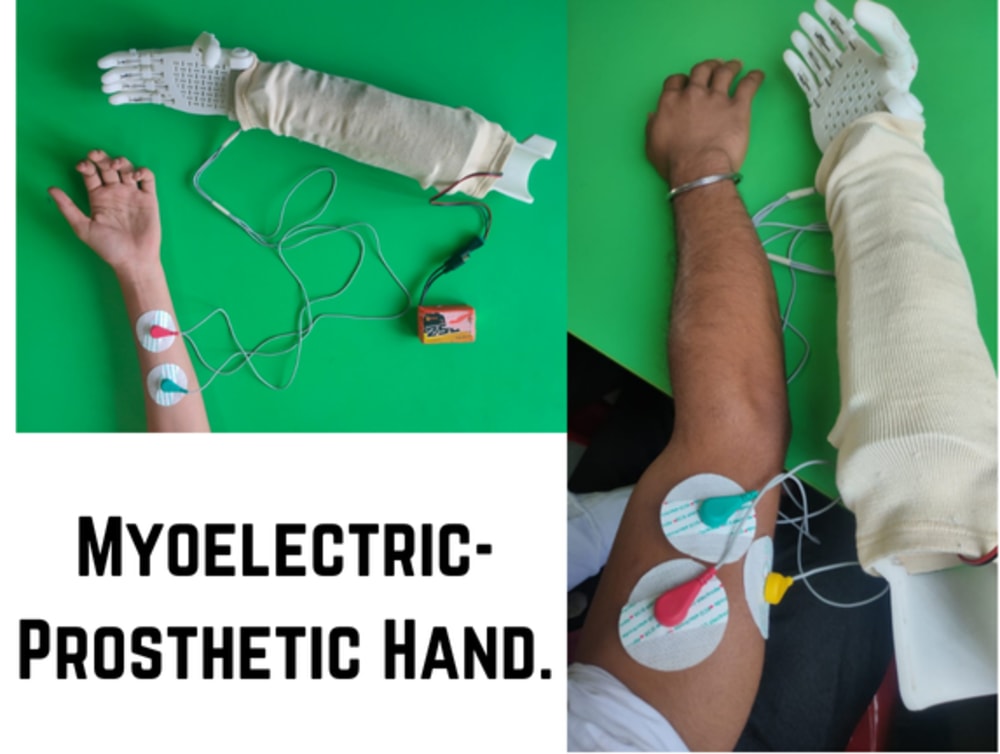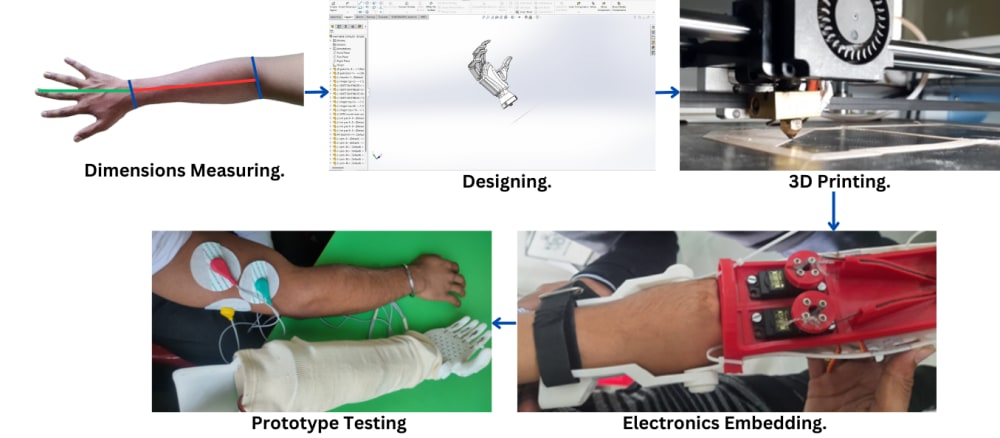How it Works:
The electronically operated myoelectric prosthetic hand is an innovative device designed to mimic the natural movements of a human hand. It operates using a battery and an EMG (Electromyographic) sensor to detect electrical activity in the muscles. ECG electrodes are placed on the biceps of the user to capture these muscle signals. The signals are then sent to an Arduino Uno microcontroller, which is programmed to respond to specific threshold values.
When the user exerts muscle power, the EMG sensor detects the electric pulses generated by the muscles. These pulses are converted into digital values by the Arduino, with a pre-set threshold value (e.g., 500). If the muscle-generated value exceeds this threshold, the Arduino sends a command to activate servo motors, resulting in hand movement.
What Makes it Novel:
The novelty of this prosthetic hand lies in its combination of advanced technology and eco-friendly design. The use of EMG sensors to translate muscle activity into hand movements provides a highly responsive and intuitive user experience. Additionally, the hand is entirely 3D printed, making it both cost-effective and environmentally sustainable. The integration of Arduino Uno as the microcontroller enhances the device's adaptability and programmability, allowing for customized user settings and improvements.
Production/Manufacturing Process:
- Design and 3D Printing of customized parts: The prosthetic hand is designed using CAD software and then 3D printed using eco-friendly materials.
- Assembly: The 3D printed parts are assembled, and servo motors are integrated to control the hand movements.
- Sensor Integration: ECG electrodes and the EMG sensor are attached to capture muscle activity.
- Programming: The Arduino Uno is programmed with specific threshold values and commands to process the muscle signals and control the servo motors.
- Testing: The assembled prosthetic hand is tested and calibrated to ensure accurate and responsive movements.
Application Areas:
- Medical Field: This prosthetic hand provides a functional and affordable solution for upper limb amputees, enabling them to perform daily activities with greater ease and independence.
- Industrial Use: The hand can be used as a robotic end effector in various industries, enhancing precision and efficiency in tasks such as assembly, packaging, and material handling.
- Educational and Research Institutions: This prosthetic hand serves as a practical teaching tool in applied robotics and biomedical engineering, aiding in the education of students. It also provides a platform for researchers to develop and test new control algorithms, materials, and sensor integration techniques.
- Assistive Technology: The prosthetic hand can support the elderly and individuals with limited hand mobility in performing everyday tasks, improving their quality of life. It can also be programmed to interact with smart home devices, providing a seamless interface for controlling household appliances and systems.
Video
Like this entry?
-
About the Entrant
- Name:Nakul Nibe
- Type of entry:teamTeam members:
- Kiran Wakchaure
- Shreyas Balak
- Samruddhi Avhad
- Shubhangi Chandgude
- Patent status:none






